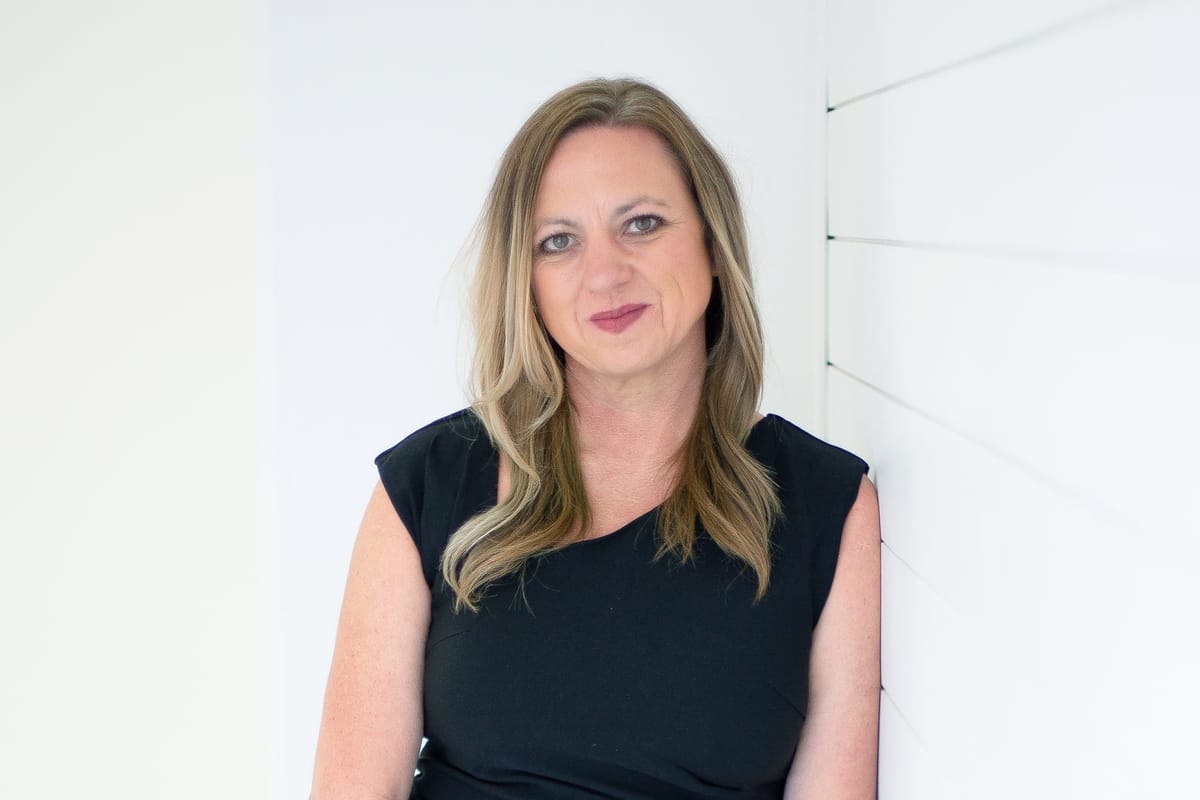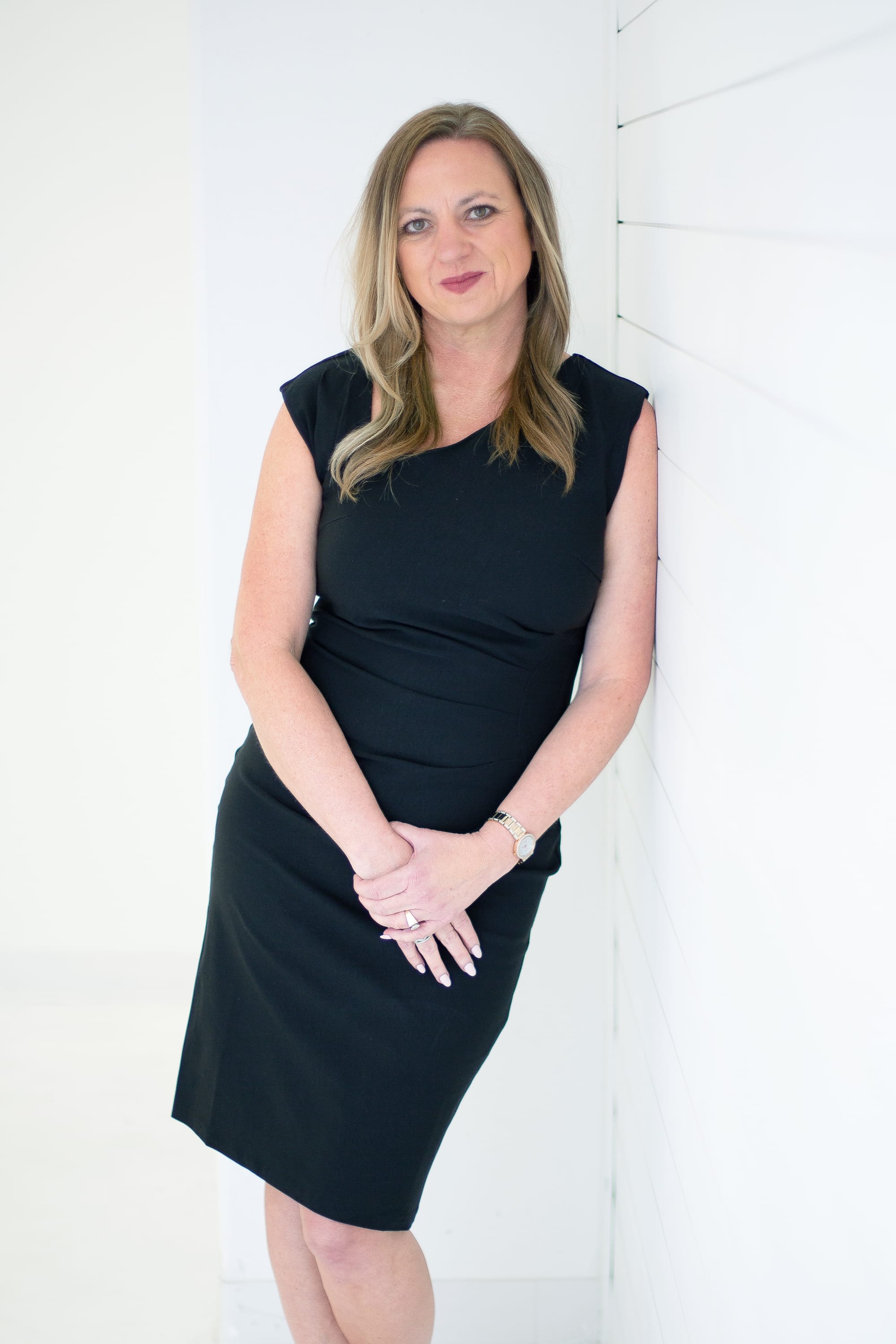

Looking back, it’s clear as a bell that City Rescue Mission President and CEO Erin Goodin was born to serve. It’s her calling; where she feels she’s meant to be. In elementary school, she was the child who raised her hand to be partnered with the children in special ed classes who needed the most help. Today, she’s parlayed that passion — and that compassion — into a career that allows her to help thousands of the most vulnerable Oklahomans find shelter, kindness and the strength to push through.
Goodin came to City Rescue Mission by a roundabout path.
She grew up in Moore, attended the University of Central Oklahoma and earned a business management degree at Southern Nazarene University. While she was in college, she worked at OKC’s clubby little dining and events bastion, Faculty House, and picked up an entry-level accounting job there which she took to like a duck to water.
“I worked at Faculty House for a while, then I went to Chesapeake for a while, and then ended up at United Way,” she says. Her five years there cemented her conviction that her heart was in social-service nonprofit work, although there was one more (happy) detour she needed to navigate before she found her way to City Rescue Mission: “When we found out I was pregnant with my son, which was our fourth child, we decided it was time for me to stay home.”
She and her husband of 28 years now have five children, ages 15 to 25. On the day she spoke to Luxiere, she was prepping her home for a visit from a college recruiter for her son, a wrestler, and — having recently learned of her oldest daughter’s engagement — was excited about planning the wedding. Goodin seems calm amid it all … or maybe she’s just tired.
But back to her career. Goodin stayed home with the kids for three years, and then one day the phone rang. “A friend of mine reached out to me and asked me if I would be interested in going back to work.” Even in the retelling all these years later, you can hear incredulity in her voice as she recounts her reply. “I was like, ‘I have FIVE KIDS,’ so no, Debbie, I’m not interested.’” But her friend pressed the issue, explaining that the position was perfect for her. “And after just, you know, praying about it for a while, and my husband and I talking about it, he was like, ‘You know, you can always say no, but if you don’t at least investigate the opportunity, you’ll never really know if that’s what you want to do.’”
She interviewed for the CFO position at City Rescue Mission, and was hired. As she says, “I knew when I walked in the door, this was where I was meant to be.” That was 14 years ago.
Her journey to CEO was just as serendipitous: In 2018, the agency’s then-CEO announced his sudden retirement, so Goodin stepped in as interim CEO with zero intention of making it permanent. “I told the board, ‘I’m not interested in this position, but I will step in and I will help in any way you need me to.’”
For about six months, she did both jobs and served on the search committee, which found a good candidate and offered him the job. But he turned it down. Goodin explains: “He said, ‘You know, there’s just things going on in my mission, and I feel like right now isn’t the right time for me to leave.’” The next thing he said sealed her fate. He told her that while it was true that his mission needed him, he also said, “This isn’t my job. This is your job. You need to take that job.”
Taken somewhat aback, Goodin, after a lot of prayer, went to the board. “I said, ‘Okay, I will consider putting my name in the hat.’ And they’re like, ‘Done. You’re hired.’” And so here we are.
Experiencing homelessness is incredibly frightening, difficult and extraordinarily traumatic. Homelessness can drive people to use addictive coping mechanisms like drugs or alcohol, and
it can cause or exacerbate depression and anxiety. And in Oklahoma, homelessness happens to far too many of us.
According to the most recent Point in Time count of the unhoused, conducted by the City of Oklahoma City in January of this year, there were 1,436 people counted, up about 100 from 2022. While best efforts are made to count every person, it’s a difficult task and the probability is that there are far more unhoused people than the count indicates. “What we estimate is that that’s maybe a third because you can’t count everybody. So that is really just a rough estimate,” says Goodin. By her count, there could be somewhere in the neighborhood of 4,500 unhoused people in Oklahoma City alone.
Here’s another perspective. Each day, City Rescue Mission does 300 loads of laundry. That’s 109,000 loads per year, which translates into 850 gallons of laundry soap each year, along with 35,000 rolls of toilet paper. Keeping everyone fed for a year requires 135,000 pounds of produce and 25,000 pounds of meat.
These days, about 350 people are housed at City Rescue Mission each night. “We usually have 100 single men, 100 single women, and then we have about 42 family units. And we’re averaging about 120 to 150 kids a night,” Goodin says. The agency is stretched beyond capacity. She began tracking everybody they are unable to serve in May of 2018. “Since then, we’ve turned away 565 households, which includes over 100 families.”
City Rescue Mission’s clients run the gamut in terms of age, marital status, gender and ethnicity. “My oldest client was a 98-year-old woman whose children had moved in with her and had abused her so badly that they broke both of her hips. When the hospital discharged her, she couldn’t go back home to that environment because it was unsafe, and so they brought her to us.” Goodin’s team helped divert her Social Security check to
a new bank account and found her a nursing home that has service animals, because she loves cats.
“First and foremost, we’re an emergency shelter,” Goodin says. “Anybody that’s experiencing homelessness, we are that safe place for shelter.” City Rescue Mission offers people clothing, three meals a day and a safe place to sleep. After that, she explains, it gets complicated. “We also want to provide much more; we are very solutions focused. So when people come through our door, we want to figure out, what does that individual need to end their homelessness?”
As you might imagine, that path is different for everybody. “We do have a recovery program. And some people really want to join that recovery program because they feel like an addiction is the cause of their homelessness … But if they just want to move forward to housing and maybe employment, they don’t have to join the recovery program. We will walk with them and work with them as they as they move forward to housing.”
City Rescue Mission houses people for an average of 32 days, and there’s strategy behind that number. “It costs on average $6,000 to rehouse somebody, when they’ve been experiencing homelessness for a significant period, even just a couple of months; it costs an average of $1,500 if you can do it within the first 30 days,” Goodin says.
Housing someone can make it easier to work through other difficulties they may be having, such as unemployment. It’s powerful, and Goodin knows it. It’s why she does what she does. “Once you get them into housing, you can then give them those wraparound supports and the services that they need to then begin addressing that depression, to begin addressing that addiction. More often than not, when they get into housing, they stop there with their addiction. Because they’re at peace.”

